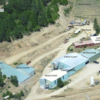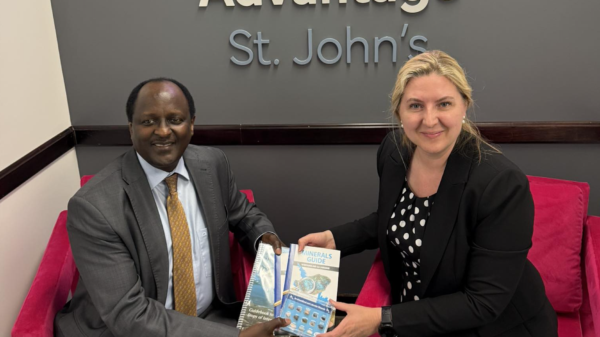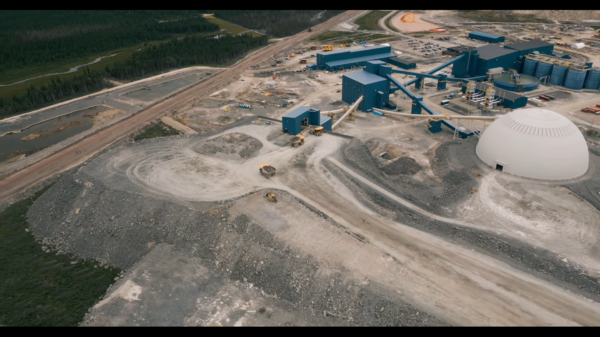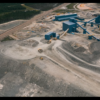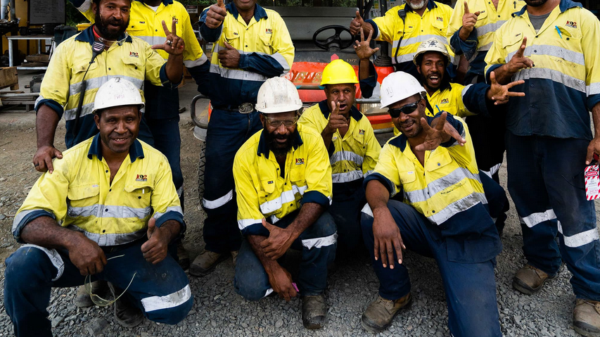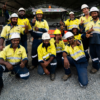Barrick Gold Corporation (NYSE: GOLD) (TSX: ABX) hosted a two-day visit to its North Mara Gold Mine in Tanzania for the UK-based non-government organization (NGO) RAID (Rights and Accountability in Development).
The reason for the visit was so RAID could experience the positive impact Barrick has had since assuming control of the operation in September 2019. RAID representatives saw a presentation on the mine’s operations and environment.
Barrick Gold is among the largest gold mining companies in the world, with operations in more than 15 countries. The company produces and sells gold, copper, and silver, and has mining operations in the Americas, Africa, and Australia.
The North Mara gold mine is located in north-west Tanzania in the Tarime district of the Mara region. It is around 100 kilometres east of Lake Victoria and 20 kilometres south of the Kenyan border.
The NGO observed a community engagement meeting with officials of the 11 host villages and the local member of parliament. The leadership allowed RAID the opportunity to raise any human rights issues. The village leadership did not corroborate allegations raised by RAID.
RAID also saw community projects, including the agribusiness providing livelihoods to over 100 youths. The NGO also saw the potable tap water project which supplies over 30,000 community members, schools and medical facilities. The projects were all funded by the mine through the Community Development Committee.
“I hope that the site visit has been informative for RAID and that they will leave Tanzania with a fresh perspective on the numerous benefits the mine brings to its host communities and its respect for the human rights of those influenced by its operations,” said Barrick’s president and chief executive Mark Bristow.
Barrick Gold accused by Amnesty International of human rights violations
RAID’s prior concerns with Barrick and the North Mara mine included allegations of human rights abuses, environmental damage, and inadequate compensation for local communities.
RAID also accused Barrick of failing to address issues of child labor, gender-based violence, and use of force. The alleged harms are part of a long history of human rights violations by police assigned for mine security.
A coalition of Tanzanian and international human rights groups have raised concerns about these abuses since 2014. A lawsuit brought by a group of Tanzanian villagers in the Ontario Court of Justice in 2020 alleged Barrick used excessive force against Tanzanians illegally entering its mine to steal gold.
Tanzanians living in communities around the North Mara mine accused the police of five deaths, five injuries and five incidents of torture at the mine. The suit claimed Barrick was responsible, alleging the police were paid and equipped by the Canadian miner under an agreement.
Additionally, Amnesty International accused Barrick in 2014 of violations pertaining to its Porgera gold mine in Papua, New Guinea.
Read more: NevGold Corp. gets exploration notice approval from Bureau of Land Management
Read more: Calibre Mining Pan Mine assays show strong potential for Coyote mine target
Barrick involved in prior human rights cases in Papua, New Guinea

Porgera Gold Mine. Image from Richard Farbelini via Wikimedia Commons
The alleged violations include failing to consult with local communities before beginning operations leading to displacement and loss of livelihood, polluting water sources and failing to provide adequate compensation for land taken from local communities.
Specifically, on June 6, 2014, state police forces burned over 200 homes in the village of Wingima, Papua New Guinea. The homes were located near the Porgera gold mine and belonged mostly to mine workers and artisanal miners. Barrick Gold owned the majority stack in the mine.
Members of the community believe the police were acting to stop unauthorized mining in the region. Government official called a state of emergency for what they called ‘law and order issues’ in the spring of 2014.
A team of investigators from Harvard University confirmed allegations of murders and sexual violence by security forces at the mine.
“We have been trying to raise awareness of these killings and rapes by Barrick’s security forces for many years,” said Jethro Tulin of the Akali Tange Association, a local grassroots human rights organization.
“Finally our allegations are being confirmed but Barrick is not supporting our calls for an investigation of these killings nor offering compensation to the families of those who have been killed or raped.”
Furthermore, in 2009, the Norwegian Government divested its pension fund of shares in Barrick Gold after it discovered massive environmental damage downstream from the Porgera mine caused by toxic mine waste into the local river system.
Barrick Gold is at the centre of environmental issues
“Our river system has been severely contaminated and is no longer safe for drinking water or for harvesting food,” said Jeffery Simon, a member of the Akali Tange Association. “This is causing a lot of hardship for villagers who rely on the rivers.”
Toxic mine waste can include as many as three dozen dangerous chemicals. These often include arsenic, lead, mercury, petroleum byproducts as well as acids and cyanide.
Producing gold for one wedding alone generates 20 tons of waste, according to environmental nonprofit, Earthworks.
“This is a common problem in developing countries and the effective impunity of Canadian companies in these situations can only be addressed by legislation, like Bill C-300, that would allow these citizens of Papua New Guinea to file a complaint and seek sanction in Canada for the abuses they are suffering,” said Catherine Coumans of MiningWatch Canada.
Mining companies routinely dump toxic waste into rivers, lakes, streams and oceans. Research from Earthworks and MiningWatch Canada discovered that 180 million tonnes of this waste is dumped annually. Beyond that, other toxins often contaminate waterways when infrastructure like tailings dams fail.
There have been over 221 major tailings dam failures, according to the United Nations Environment Programme (UNEP). These have caused loss of life, community displacement and contaminated drinking water. The contaminated water is called acid mine drainage, which is destructive to aquatic life.
Read more: Calibre releases short doc on environmental initiatives in Nicaragua
Read more: Calibre Mining finds robust drill results from Golden Eagle project
Calibre Mining (TSX: CXB) (OTCQX: CXBMF) recently released a document on its environmental, sustainability and social governance practices detailing everything it’s doing to protect the environment.
Calibre Mining is a sponsor of Mugglehead news coverage
Follow Joseph Morton on Twitter
joseph@mugglehead.com



